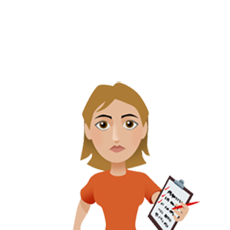The 3 Legged Stool of Success for ADHD Kids Part 3: Self-Improvement

We are honored to have Dr. Jerome Schultz as a Guest Expert and are thrilled to provide his wisdom in a three-part series: “The 3-Legged Stool of Success for ADHD Kids: Helping Kids Develop Self-Awareness, Self-Advocacy, and Self-Improvement.” Click here to read Part 1: Self-Awareness and Part 2: Self-Advocacy. This is the final installment in the series.
In the first two parts of this series, I introduced the three-legged stool of success for kids with ADHD and offered strategies for improving Self-Awareness and Self-Advocacy. In this final segment, I'll address the parent's role in fostering Self-Improvement.
Self Improvement is the act of pulling yourself up by your own bootstraps and doing better than you did before. For kids to be able to take responsibility for getting better at something, it requires the belief that they can and will do better…and that they want to! It requires the ability to face challenges with eager anticipation and not with mind-numbing fear and anxiety. To self-improve means knowing where you were and where you want to go and recognizing when you get there. It also means being able to tolerate and learn from mistakes and failures.
For self-improvement, a child also has to be able to “own” his successes (“Hey, I did that!) and not attribute good grades to good luck or praise to someone “just being nice” to you. Self-improvement requires the opportunity to compare your own current performance with your own past performance. That is a prerequisite to learning how to compare yourself to others in a constructive way.
Want to help a child with ADHD learn to self-improve?
Set Goals
Having a child set her own goals for self-improvement is important. You can help by asking questions like: “Do you think you did the best you could do on this?” You can set a minimum expectation while keeping the bar moving up by asking, “how many more than three can you do?” or “You've filled in half the page with some really neat information. What if you were working for a newspaper and the boss said you had to fill in a whole column or a whole page. Could you do it?” (If the answer is no, then add … “Let's pretend she offered to pay you $100. Now try it.”)
Article continues below...
Want to Motivate Kids?
Download a free tipsheet "The Parent's Guide to Motivating Your Complex Kid" to help your child find the motivation to do... anything and everything!
Good Enough
Have discussions with kids about what's “good enough.” Help them see the difference between getting a better grade on a test and showing what you know. Ask teachers to give kids the opportunity to do both (and value both).
Identify Successes
Compare school with sports, dance, art, or whatever happens to motivate your child to perform. “What did you do to improve your (game, speed, stamina, use of color, ability to spin without getting dizzy, etc.)? Let's figure out how to do that in math.”
Success Leads to Success. Practice self-improvement on tasks that a child loves. Before trying the most challenging tasks, let your child practice on things like beating his previous score on a video game; getting more bowling pins down in the next frame or game; collecting more snow globes or lego blocks, etc. A successful practice leads to generalization. “Remember how you sold more Girl Scout Cookies than anyone in your troop?” Or, “You know how you take better selfies than most people? Let's try to do that here…”
Evaluation
Encourage kids to evaluate the process they use in addition to the product they generate. “What do you think about this report you wrote? What process did you use to do this level of work? Would you change anything about how you did this if you were asked to do something like it again?”
Involve Teachers
Encourage teachers to make “doing your personal best” a theme for the term or the year. Have kids keep private data that shows their trends. Up-turning graphs increase motivation and smiles.
I'm hoping that this new way of looking at selfies can you help kids with ADHD look better, perform better and feel better about themselves. Click, click, click!


